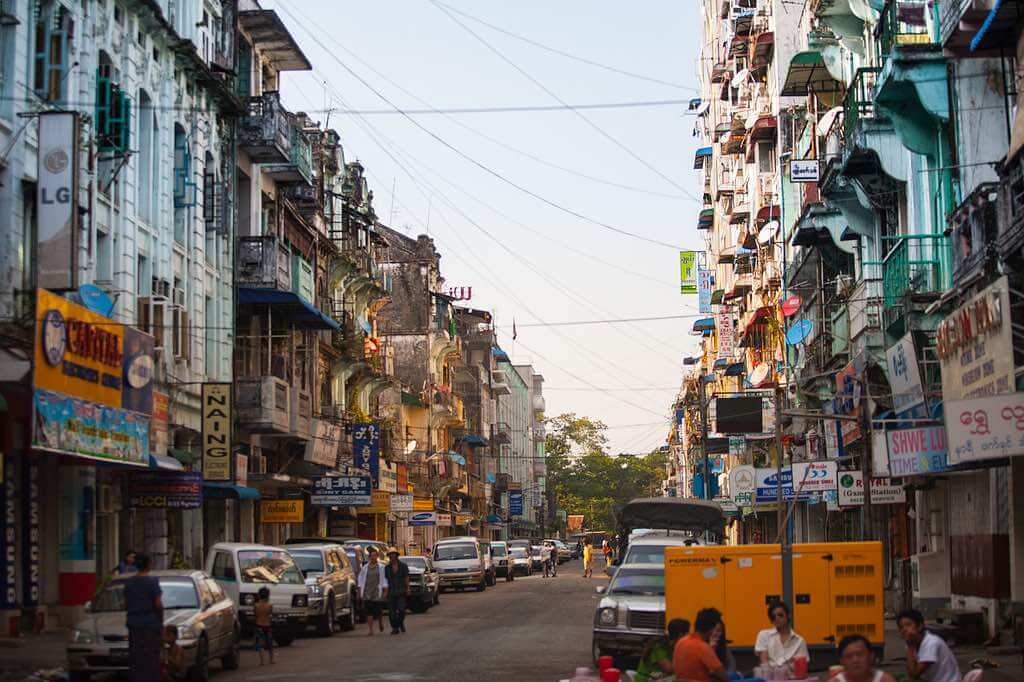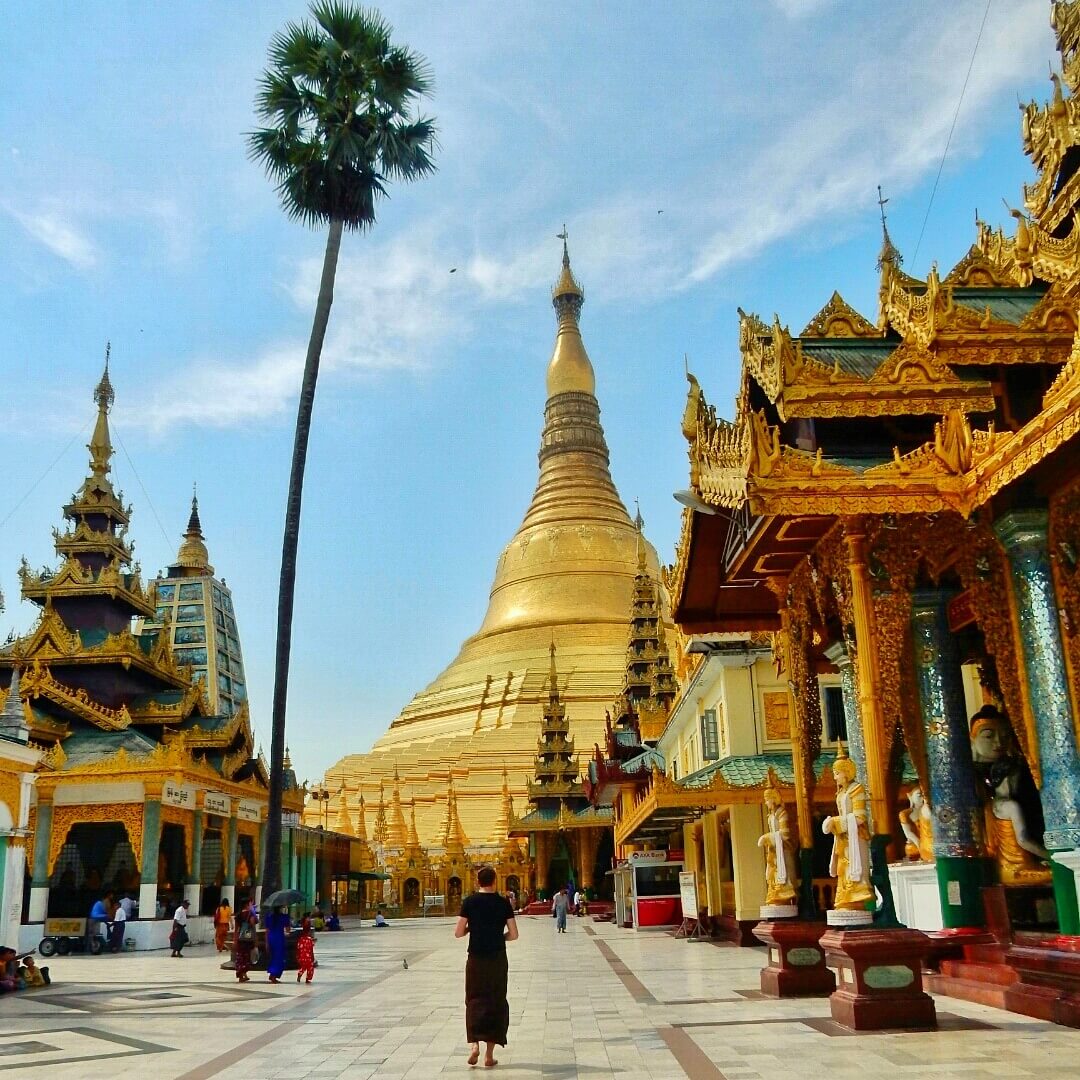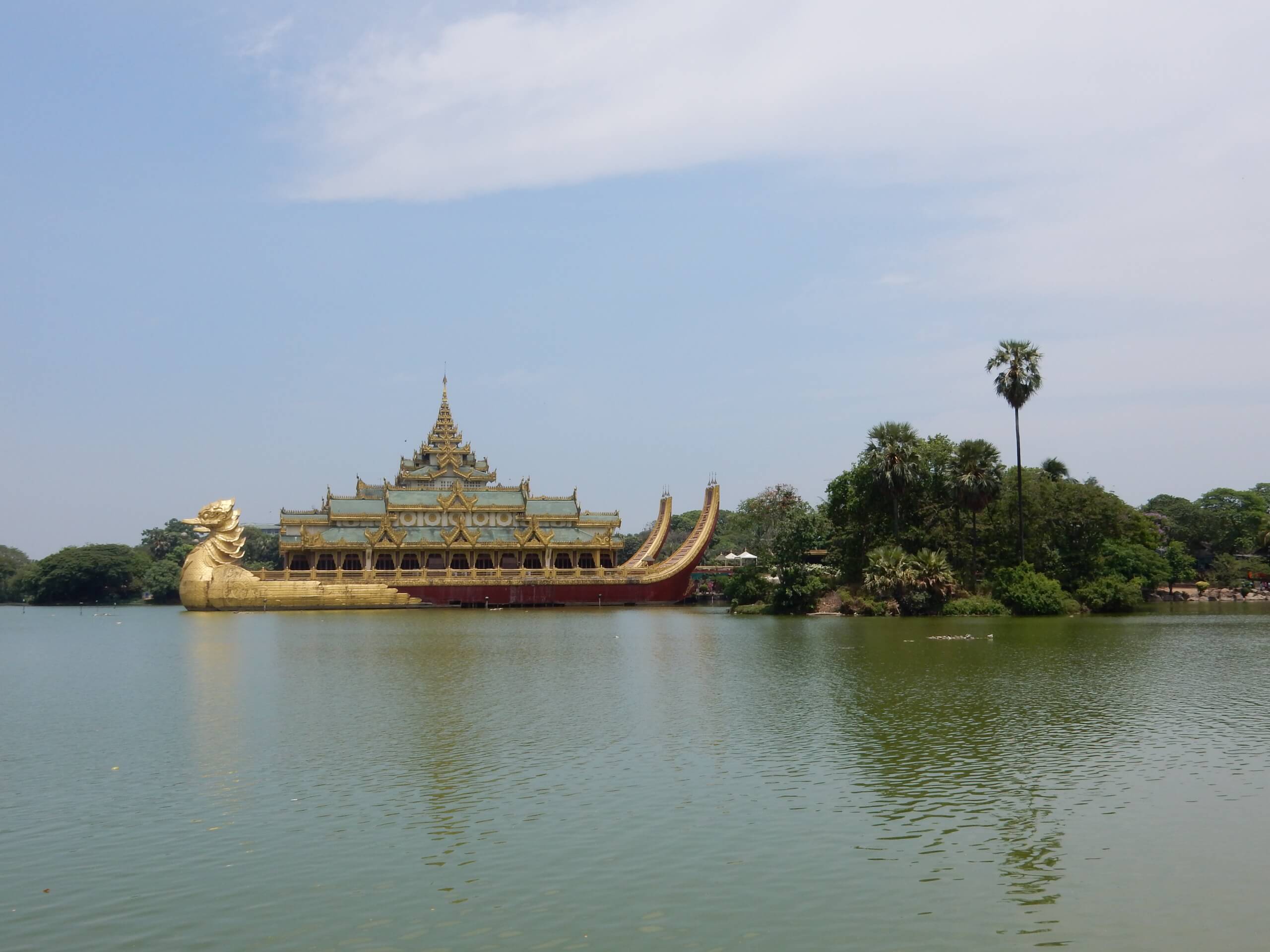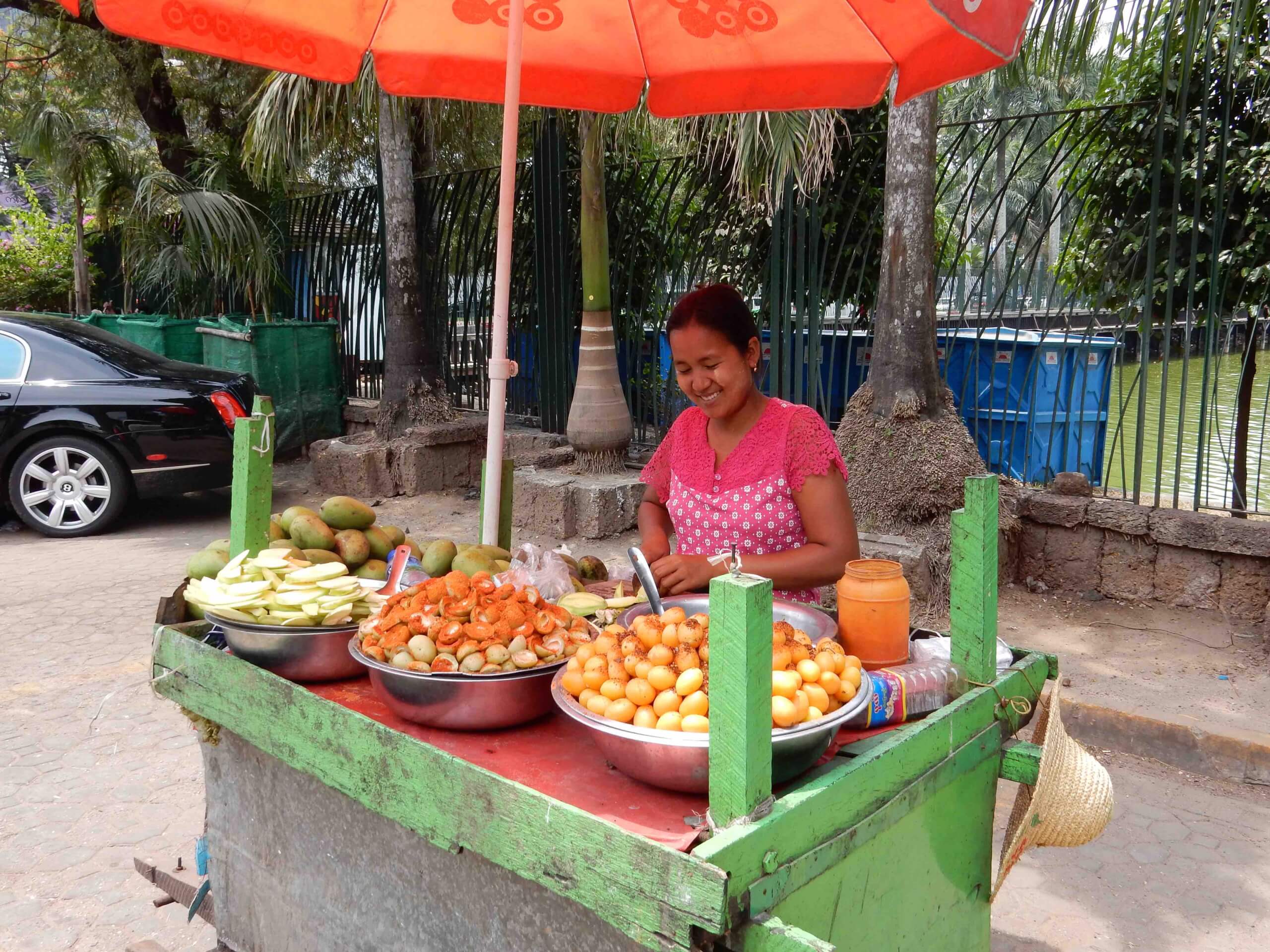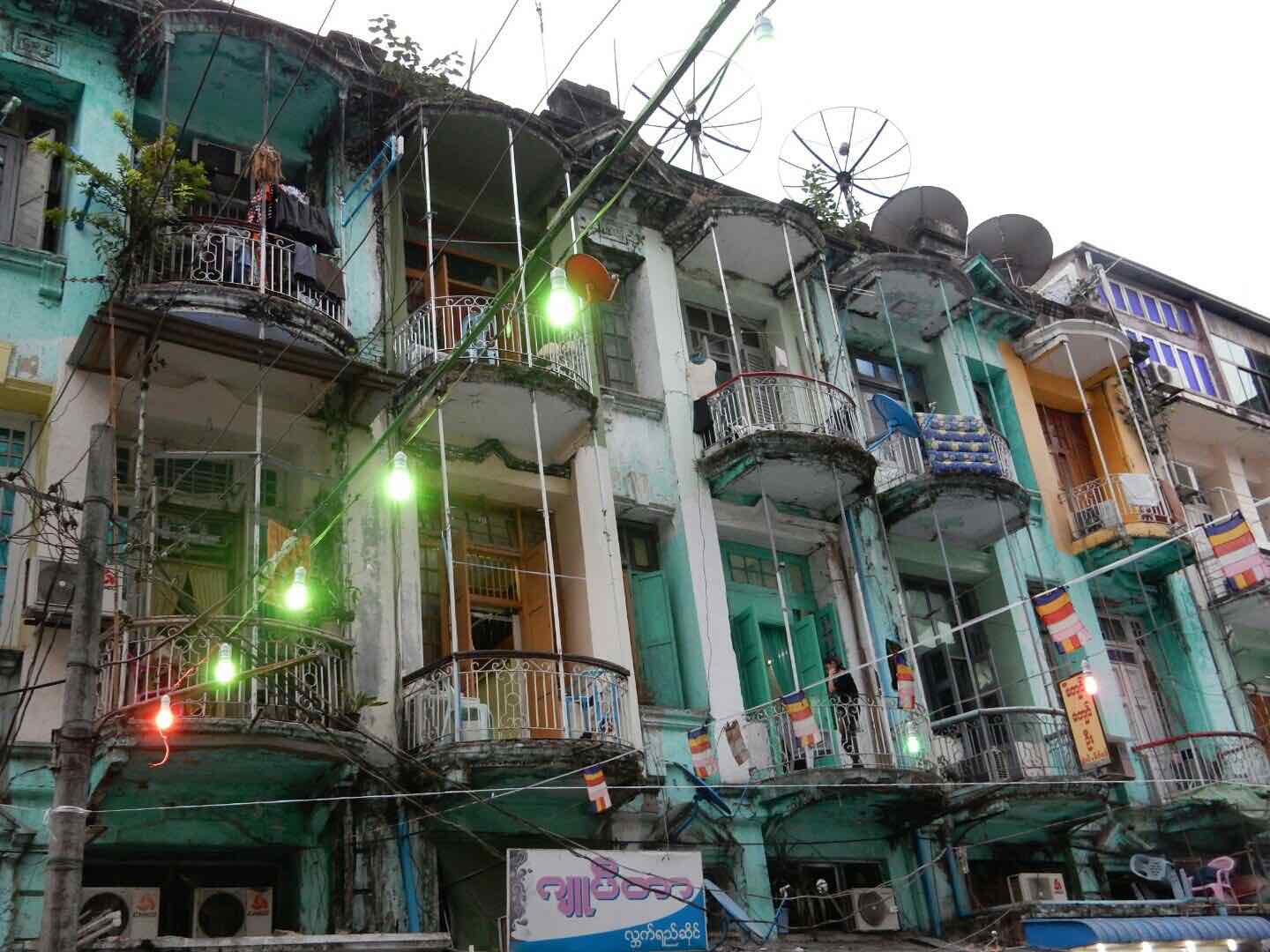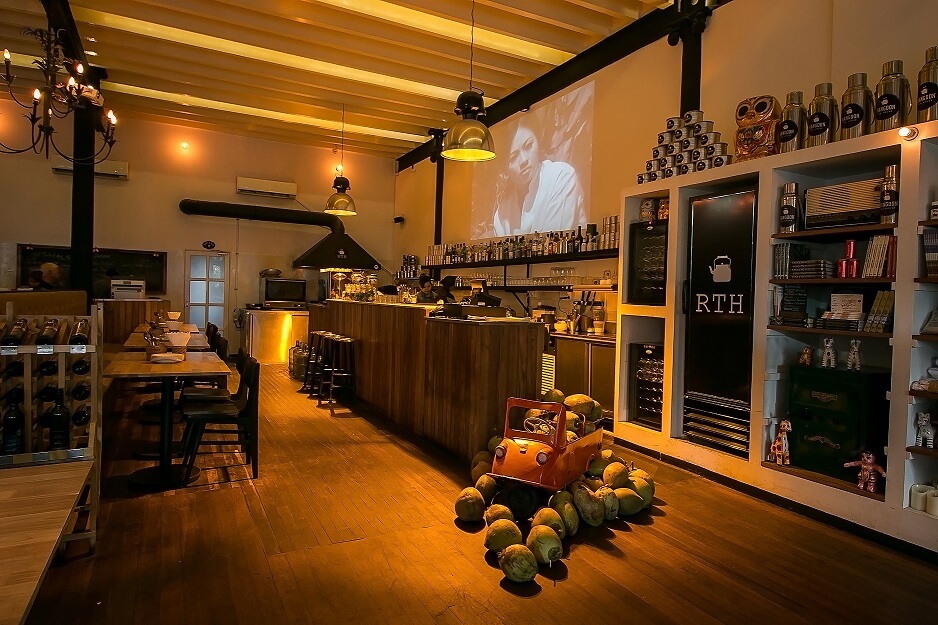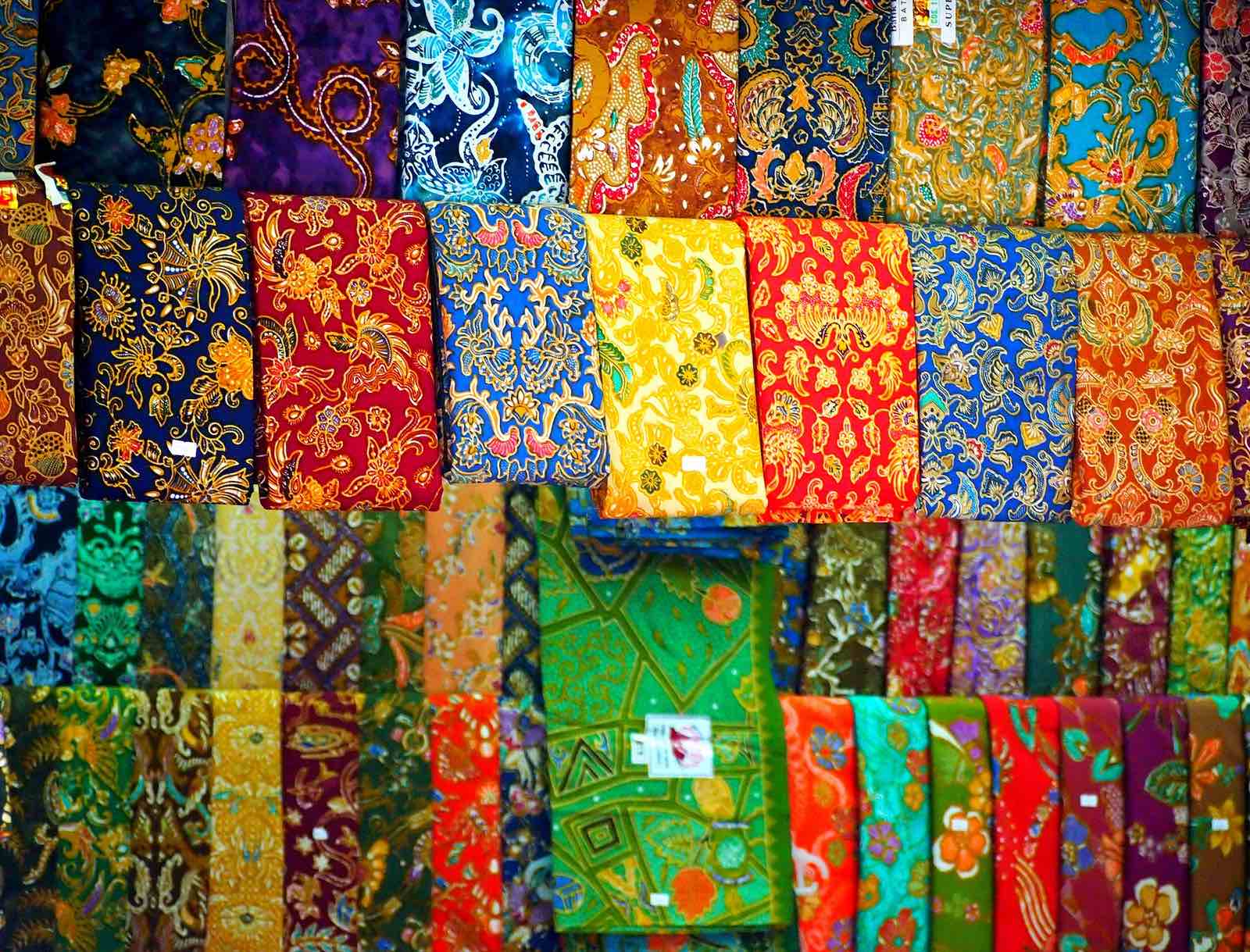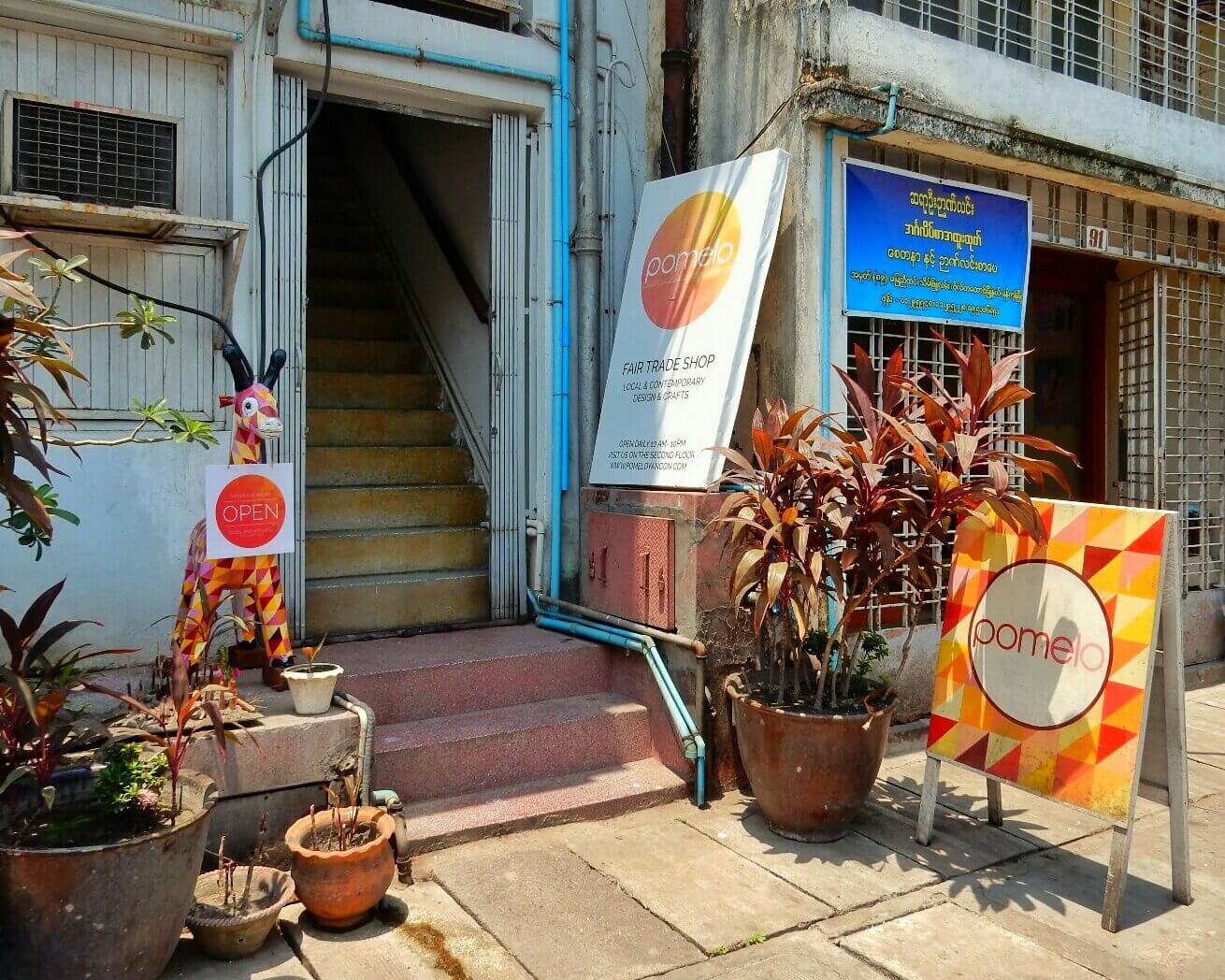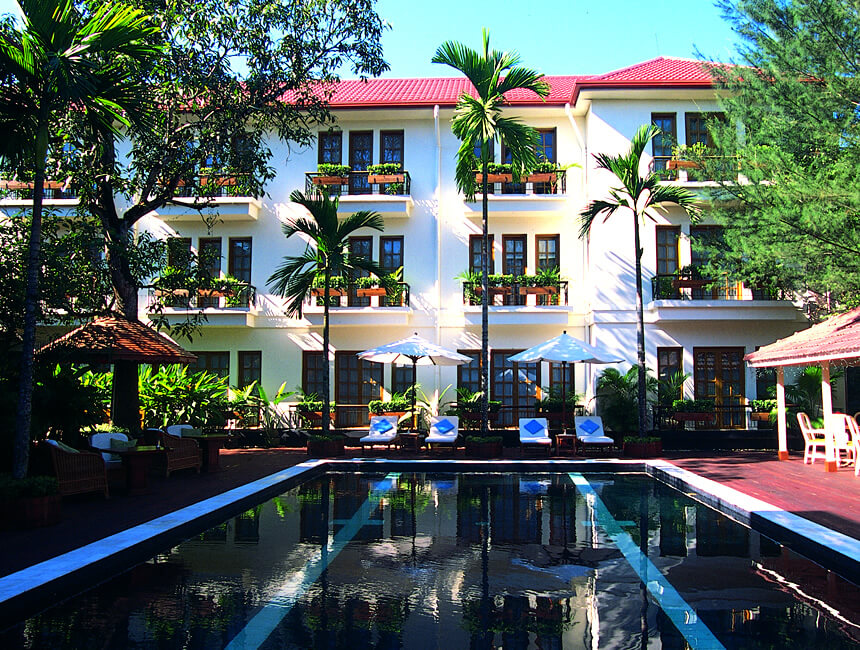Perfect Weekend: 48-Hours in Yangon, MyanmarBy Kirsten Henton
Step aside Bangkok; pack up your skyscrapers Hong Kong; there’s an enchanting old kid on the block, and it’s wowing travellers from all over the globe. Yangon, one of those not-a-capital-but-sounds-like-it-should-be cities, is the crazy, colourful, beating heart of Myanmar with shining pagodas, incredibly friendly people, impressive architecture, a surprising abundance of greenery, and boatloads of character. If you’re visiting Myanmar, you’re likely to pass through at some point, and this is your starter kit to finding your feet and getting the most out of Yangon in that time.
Photo Credit: Yangon © Theis Kofoed Hjorth
Yangon: Pagoda Heaven
Photo Credit: Kirsten Henton
Yangon is a pagoda lover’s dream with endless shrines and temples to visit and explore. Naturally, the iconic, glittering beacon that is the Shwedagon Pagoda is, hands down, the most dazzling. It really is as beautiful as it looks in pics – and then some. Be prepared to spend more time there than you might think as you while away hours examining the countless buddhas, costumes, offerings and more. Go early to see the sun rise and glint off the awesome structure, or book tickets for a sunset viewing when the whole site is bathed a rich goldy pink.
Another well known temple is the Chaukhtatgyi Pagoda with its epic reclining buddha and relaxed atmosphere. The buddha stretches 66 metres, and is considered to be very special with people across the country. Sule Pagoda, which will quickly become your visual reference point while exploring downtown Yangon, is also a favourite. Part temple, part roundabout it sits alongside City Hall.
Yangon: Get Outdoors
Photo Credit: Kirsten Henton
Kandawgyi Lake, and the surrounding parkland, is a great place to escape the hum of traffic and where you can see the slightly bizarre yet iconic Karaweik, a sizeable reproduction of a Burmese barge that today serves as an event space and restaurant. Take a wander round the edge of the nature park before hitting the very rickety boardwalk – just watch out for the boards with white markings, as these are a little on the wobbly side.
Photo Credit: Kirsten Henton
People’s Park is another favourite, especially with locals at sunset. Try your feet at a pedalo or make for the Yangon Gallery where you’re sure to find a modern art exhibition of interest.
Photo Credit: Kirsten Henton
The ageing colonial townhouses of downtown Yangon are an attraction all of their own. Snake your way on foot around the grid layout of the streets to really get a feel for what life is like in the city’s most frenetic quarter. While the fading colour, Parisien-like balconies, and ironwork are incredibly photogenic, you’ll feel a slight sadness that the buildings have been left in such a bad state, however they are a sight to see nonetheless.
Yangon: For History
Photo Credit: Taukkyan War Cemetery © Allan Grey
Get to know the founder of modern Myanmar at the Aung San Museum. General Aung San, the father of renowned democracy activist, author, and now State Counsellor and Leader of the National League for Democracy, Aung San Suu Kyi, was assassinated in 1947, and the museum is located in the general’s last house. It’s loaded with family photos, printed speeches and personal items.
The Taukkyan War Cemetery, 25km north of the city, is a stark reminder of Burma’s role in WW2, as more than 6,000 Allied soldiers are buried here. It is an expansive, peaceful site that deserves your time, especially if you have an interest in the Allies’ role in southeast Asia during the war.
A rather secluded but hugely important historic site is the tomb of Bahadur Shah Zafar II whose exile to the city in 1858 marked the start of the British Raj period in India. As the last Mughal emperor, when Bahadur Shah Zafar II died in 1862, the British made sure his tomb was well hidden, but today it is an important site for Indians and Muslims.
Yangon: Eat and Drink
Photo Credit: Inside the Rangoon Tea House © Rangoon Tea House
The Rangoon Tea House is a relatively recent addition to Yangon’s restaurant scene, and it stands out for its sophisticated design with a nod to the colonial. Food is big and tasty – try a balti for size or the warming fish broth noodle soup, and don’t go anywhere until you’ve demolished the lamb samosas. You’ll also find excellent cocktails, wine and, rumour has it, a top cup of coffee.
The Lucky Seven Tea House is a more laid back affair, with low down tables set out on a delightfully jungle-like terrace surrounded by plants that help keep things cool. There’s a good varied menu, and it makes the perfect pit stop at any time of day. Meanwhile, 999 Shan Noodle House is the place for great value traditional dishes – you’ll rub elbows with locals and tourists alike, all delving into hot and steamy bowls of noodles and delicious plates of veg.
Hit Bar Boon, a stylish Dutch import implausibly situated among the bustling chaos of Bogyoke Road, for your iced coffees, toasties, smoothies and other creature comforts. For a cold Myanmar beer with a view, make for roadside Takafuji. Pull up a plastic chair and watch the world go by – especially good at rush hour when Sule Road comes alive with commuters, monks, buses, street vendors and more, all rushing this way and that.
Yangon: Shop
Photo Credit: Longyi (sarong) material at Bogyoke Market © momo
Shopping in Yangon is a diverse business. From the designer gladrags at The Avenue to street market bargains, there’s something for everyone. Bag go awol on the flight over and need the basics? Have no fear – you will find almost anything on the stalls lining Anawrahta Road. From pants to padlocks, jazzy phone covers to sunglasses, fruit and veg to deep fried snacks, there’s nothing quite like navigating the busy pavement-cum-street-market in the late afternoon.
Just north of here, the indoor Bogyoke Market is firmly on the tourist shopping trail with its collection of handicrafts, jade (of varying quality), antiques, cloth and furnishings, paintings, wicker work, and much more. It’s famed for its gold jewellers, many of whom do a roaring trade on the side as reasonable-rate currency exchanges. Originally called Scott’s Market, it was built by the British in 1926, and embodies a typical colonial look. Skip the main entrance and delve down the cobbled side streets, among the multicoloured stalls selling all sorts of snacks and fruit, and submit to a freshly squeezed juice to fuel you for some haggling.
For a touch of kitsch and colourful nostalgia, you can’t beat the vibrant prints from Yangoods. From postcards and purses to notebooks and huge wall coverings, Yangoods is a must for those who love vintage style posters and retro designs. There are three outlets located around the city, including a small one in Bogyoke Market.
Photo Credit: Kirsten Henton
The treats that await you in Pomelo makes the hot hike up the stairs more than worth it. Brimming with bright ornaments, handwoven jewellery, tote bags, and textiles of all shapes and sizes, as well as sustainably grown tea and cultivated honey, Pomelo is a not for profit organisation selling handmade items from local communities. Run by volunteers, the stylish shop is the perfect place to pick up gifts as well as beautiful touches to take home – you won’t leave without one of the papier mache dogs – they’re adorable! The original founders of Pomelo are also working on a new social enterprise shop, Hla Day (meaning ‘beautiful’), which is set to open in the city later this year.
Yangon: Sleep
Photo credit: Boutique Savoy Hotel, Yangon © Savoy Hotel Myanmar
Interestingly, and in contrast to many other cities in southeast Asia, Yangon is not a night owl. Cafes, bars, shops – most are packed up, shutters down by 10pm, so even in the hustle of the busiest areas, you’re guaranteed a surprisingly quiet night’s sleep.
Yangon is divided firstly into districts, and then into townships. The western district is the most popular for travellers, as even at its furthest edges you’re within easy reach of the main attractions and the city’s good vibes. This area is typically referred to as downtown, and has no less than 10 townships within it. Like it busy and lively? Stay around the Kyauktada Township. Prefer a little space? Aim for the likes of Dagon or Bahan Townships where you’ll find wide, leafy avenues along with some of the city’s most exclusive addresses.
If you’re splashing out, it’s hard to recommend anywhere other than the beautiful Savoy Hotel. This boutique mansion is limited to 30 rooms with the most Instagrammable of swimming pools. It’s only a short distance from the Shwedagon Pagoda, and an easy taxi ride to Sule Road. Other options include big names like the Sule Shangri-La, and of course there’s the historic Strand Hotel and all its colonial finery by the port, although please note that it will be closed until November 2016 for refurbishment.
There are plenty of really good mid range options across the city, but if you’re on a bit of a budget, you can’t go wrong with the Chan Myae Guesthouse in Kyauktada Township. This relatively recent addition to the accommodation scene, and offers a variety of rooms (shared or private) on a B&B basis. The staff couldn’t be more friendly, and if you want a hand organising any tickets or transport, they’re the people to speak to.
Yangon: When to Go
Myanmar’s peak season typically runs from November to March, when the weather in Yangon is hot, sunny, and dry. The rains come from May to October, and April is the hottest month of the year with temperatures often reaching 40°C.

